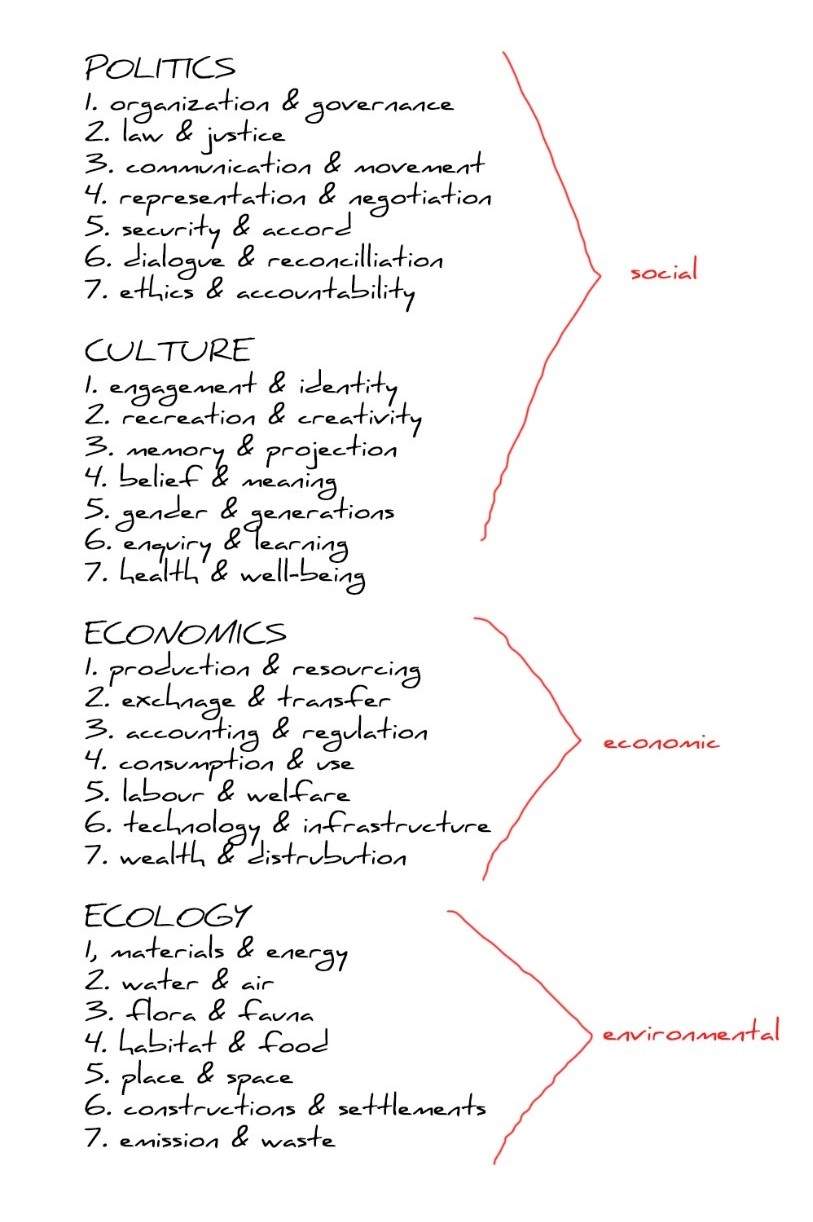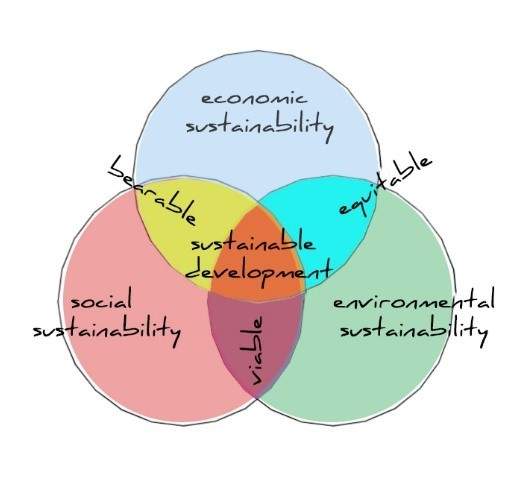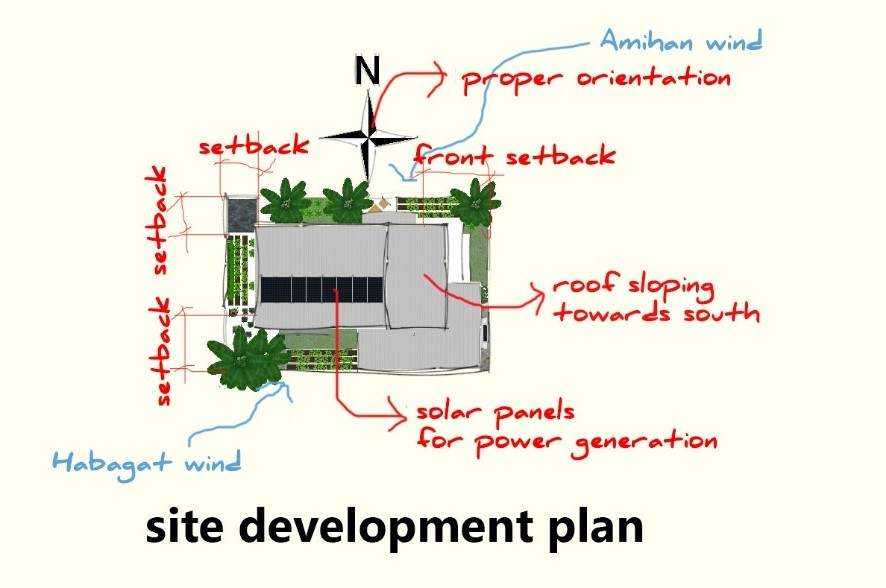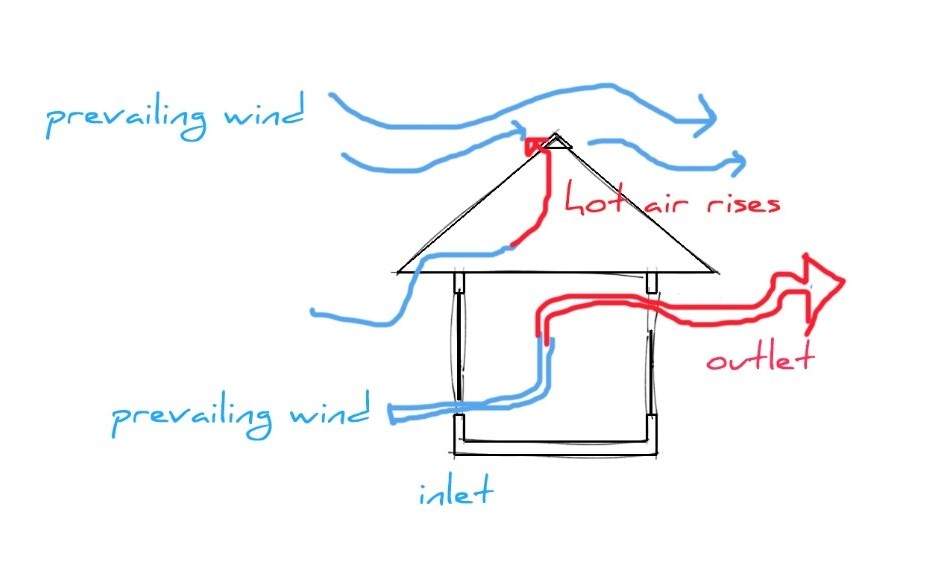What really is Sustainable Design?
In the recent years, "Sustainable Design" and "Green Architecture" have been a trend here in the Philippines. Or maybe they are more like buzzwords? Almost all designers know and talk about sustainable design, but not all who know about it also practice this. Maybe not everyone understands the concept and the very core of being “sustainable”.
When we say Sustainable Design, it is also incorporated to environmental design which means the objects that we design must be environmentally conscious, or in our term: eco-friendly.
To qualify as a sustainable development, the built environment and services must comply with the principles of social, economic and ecological sustainability (Wikipedia). Below are the three pillars to sustainability. On the right, each pillar is listed with its respective considerations.

How do you practically apply sustainable design?
Green Architecture is also talking about the same concept. Green Architecture Advocacy Philippines (GreenAP) wrote in their website:
"Green Architecture involves a whole-building approach to sustainability by recognizing performance in human and environmental health. These involve sustainable site selection and development, energy efficiency, water conservation, clean air, use of low-impact materials, renewable resource and preserving indoor air quality."
The goal of these two design approaches is to limit the negative impact to the environment and this can be achieved through careful and sensitive spatial planning, passive cooling, addressing heat gain and feasibility studies.

How to orient the structure on site
Considering that we use large amounts of glass windows, oftentimes there are no outlets. Without an escape at the top, there’s a tendency that rising hot air is trapped and would lead to massive heat build-up inside. This is where passive cooling is introduced.
Passive cooling is a design approach preventing heat from entering the interior or removing heat from the building (natural cooling). (Wikipedia) The goal of this approach is to catch wind to enter into the building therefore this does not require electrical nor mechanical power to generate cross-ventilation. This must always be the first recommendation before proceeding to other options such as active cooling.
Active cooling is a design approach that uses mechanical equipment to control indoor thermal comfort.
Let’s say, with the given lot orientation, how do we design this house in the most sustainable way possible?

How to collect rainwater
Because of the growing demand of water supply, let’s say in Davao City alone, there will come a time that the supply cannot provide enough for the consumers. Thanks to the strong will of the city councilors, they came up a mandatory provision. The Davao City Ordinance No. 0298-09: An ordinance for the proper harvesting, storage and utilization of rainwater in Davao City (Davao City Ordinance of 2009). All construction of new commercial and industrial buildings, major renovation expansion of existing public and private buildings (e.g. public schools and markets), new residential building units (in subdivisions) must install a communal or cluster type RCS (rainwater catchment system), newly established agricultural plantations (RCS or small water impounding system), and other priority farms (RCS or SWIS). Putting up of a RCS will be a mandatory requirement in the issuance of new building permit. Even pervious and impervious surfaces in roads, open air parking area, recreational and sports facilities and other large open establishments shall be designed to catch rainwater to reduce storm water peak flow and surface runoff. To learn more about this Implementing Rules and Regulations, the copy of the IRR is already available online for the purpose of public awareness.
Rainwater harvesting or rainwater collection is the process of collecting rainwater from roof and re-using it rather than allowing it to run-off and accumulate. Rainwater is one of the contributors of flooding. To reduce flooding, rainwater harvesting is one way to alleviate to problem. So, how can we re-use rainwater? It can be re-used for a non-health purpose or can be as a potable water, but of course this will undergo a lot of process. For the sake discussion, here are some way to recycle rainwater as non-potable:
- Toilet flushing
- General cleaning
- Gardening (for non-edible plants. Use filter for edible plants)
- Laundry
- Car washing
- Fire fighting
- Construction
- Landscape irrigation
- Can also be used for Urban and Rural agriculture
- Backyard and commercial animal raising
- Crop production
Rainwater for potable use must be adequately treated, filtered or boiled and must be tested with the City Health Office, the Department of Health or its accredited laboratories.

How to address heat gain
Proper orientation of the building should be highlighted and must come in first before any planning stage to anticipate cross-ventilation across the room or building. This process is call passive cooling as explained above.
Sun rises on the east and sets on the west slightly on the south. Sunrise heat is good for the skin not later than 9:00am. It’s best to orient bedroom windows on this side too. The worst sin in planning would be locating big bedroom windows on the west/ southwest since afternoon sun is at its peak even after lunch time. And we wouldn’t want to be baked inside our own house, right?
Wind direction is either Northeast (Amihan Wind) or Southwest (Habagat wind). By anticipating these wind directions, you can now catch as much wind to enter your building. And by creating wind draft, you can now have cross-ventilation.
Tip: window opening must face the prevailing wind. There must be an inlet and outlet for the wind draft. The outlet must be larger than the inlet to create suction and must be higher than the inlet because hot air is lighter then cool air therefore hot air rises. See diagram below.

How to recycle Graywater
Grey water recycling is the process of reusing water from grey waterline. Grey water is taken from showers, sinks, wash hand basins, baths. From these fixtures, the grey water is re-used in flushing toilets, watering gardens, car washing and running washing machines (See diagram below). But of course, there’s a process. And we will be needing professional consultants for that.
Note: black water is discharged from toilets and is described as waste water. This is the type of water that contains, feces, urine and flush water from toilets. Thus, this should have a separate line. Black water contains bacteria that must decompose before it is released safely into the environment.
What makes these processes a contributor to sustainable development? It has a lot of benefits.
- Adopts to the impact of climate change
- Protects and conserves the environment
- Alternate source of water supply for non-potable use.
- Reduce the effects of storm peak flow and surface run-off and siltation.
- Reduce or save on water bills
- Reduce consumption of potable water
- Continuity of water supply for irrigation.
And because of this, water companies can create another water service aside from providing water. “Water companies need to move away from selling water to selling water services”, Jacob Tompkins quoted on his article.
Wrapping it up
A quick recap and simple checklist to see if your structure is sustainable
Planning
- Is the planning or physical arrangement organized? Is it easy to govern/ maintain?
- Is the height and sizes of built-in cabinets (kitchen counter, for example) fit for the users?
- Can the users move comfortably inside the structure (or even outside)?
- Does your structure serve its purpose without demoting its identity?
- Do you see your structure still functioning in the next 10-20 years without damaging the environment?
Energy
- Does the user live comfortably inside? Are they not demoted or depressed whenever they use the structure?
- Do you consume less electrical energy?
- Do you use renewable energy such as solar panels, wind turbine, etc. ?
- Is the technology that you applied on your structure, helpful to the users?
Resources
- Can you produce / grow your own food within your perimeter?
- Do you keep on buying new materials whenever there’s a repair, for example?
- Do you harvest rain and re-use it?
- Check your bills for the past few months and compare. Were you able to save on your electrical bills and water bills?
Waste
- Do you produce lesser waste than the usual?
- Do you recycle clean waste as much as possible?
- Do you produce too much carbon footprint?